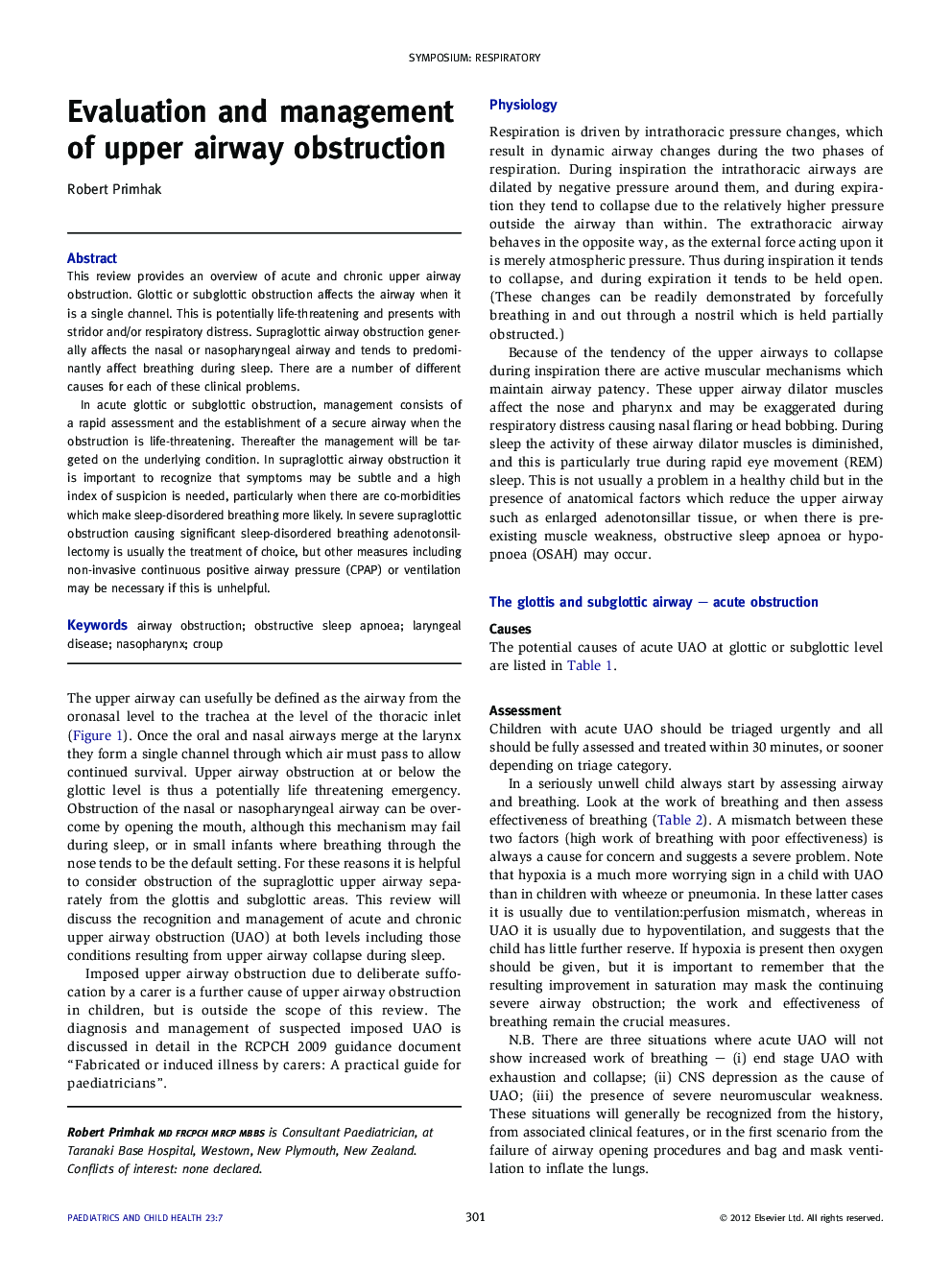| کد مقاله | کد نشریه | سال انتشار | مقاله انگلیسی | نسخه تمام متن |
|---|---|---|---|---|
| 4172314 | 1275737 | 2013 | 6 صفحه PDF | دانلود رایگان |

This review provides an overview of acute and chronic upper airway obstruction. Glottic or subglottic obstruction affects the airway when it is a single channel. This is potentially life-threatening and presents with stridor and/or respiratory distress. Supraglottic airway obstruction generally affects the nasal or nasopharyngeal airway and tends to predominantly affect breathing during sleep. There are a number of different causes for each of these clinical problems.In acute glottic or subglottic obstruction, management consists of a rapid assessment and the establishment of a secure airway when the obstruction is life-threatening. Thereafter the management will be targeted on the underlying condition. In supraglottic airway obstruction it is important to recognize that symptoms may be subtle and a high index of suspicion is needed, particularly when there are co-morbidities which make sleep-disordered breathing more likely. In severe supraglottic obstruction causing significant sleep-disordered breathing adenotonsillectomy is usually the treatment of choice, but other measures including non-invasive continuous positive airway pressure (CPAP) or ventilation may be necessary if this is unhelpful.
Journal: Paediatrics and Child Health - Volume 23, Issue 7, July 2013, Pages 301–306